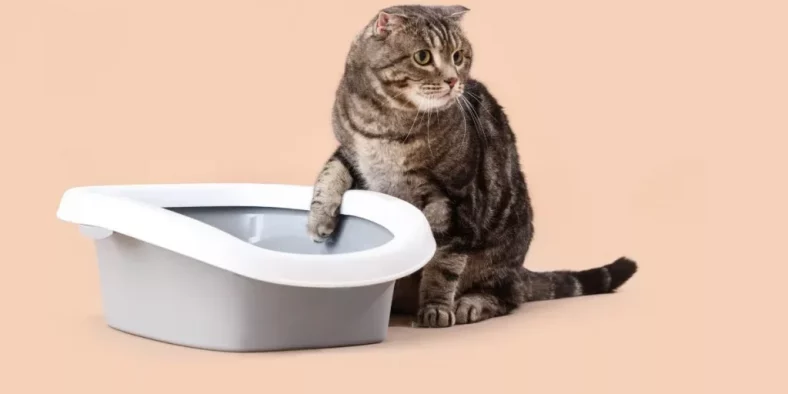How Often Should You Replace Cat Litter for Optimal Hygiene?

To maintain optimal hygiene for your beloved feline companion, the frequency of replacing cat litter is a crucial aspect to consider. You may be surprised to learn that the answer isn’t a simple one-size-fits-all solution. Factors such as the type of litter used and the number of cats sharing a litter box can significantly impact how often you should be refreshing the litter. By understanding these variables and staying attuned to your cat’s behavior, you can ensure a clean and healthy environment for your furry friend.
Importance of Regular Litter Changes
Regularly changing your cat’s litter is crucial for maintaining optimal hygiene and preventing odor buildup in your home. By ensuring clean litter, you create a healthier environment for both your feline friend and yourself. Cats are meticulous creatures, and a dirty litter box can lead to them refusing to use it, resulting in accidents around your home. Not only does timely litter replacement promote good hygiene, but it also helps in monitoring your cat’s health. Changes in your cat’s waste can indicate underlying health issues, making it essential to have a clean litter box to accurately observe these signs.
Failure to replace the litter regularly can lead to unpleasant odors permeating your living space. These odors aren’t only off-putting but can also be harmful to your health. The accumulation of waste in the litter box creates a breeding ground for bacteria, increasing the risk of infections for both you and your cat. By making it a habit to change the litter frequently, you create a clean and safe environment for everyone in your household.
Factors Influencing Litter Replacement Frequency
To determine the frequency of litter replacement, consider your cat’s habits and the type of litter used. Cats vary in their litter box preferences; some may be more particular about cleanliness than others. If your cat tends to urinate frequently or has a larger body size, the litter may need to be changed more often to maintain optimal hygiene.
Additionally, the type of litter you choose can impact how quickly it absorbs and controls odors. Clumping litters are typically easier to maintain as you can remove soiled litter easily, while non-clumping litters may require more frequent full changes.
Furthermore, the number of cats you have sharing a litter box will also influence how often you should replace the litter. A higher number of cats will result in the litter box filling up faster and needing more frequent changes. Observing your cat’s behavior and monitoring the condition of the litter will help you determine the best schedule for replacing the litter to ensure your cat’s hygiene and comfort.
Recommended Schedule for Litter Refreshing
For maintaining optimal hygiene in your cat’s litter box, adhere to a consistent schedule for refreshing the litter based on usage patterns and type of litter utilized. Regularly scooping out solid waste and clumps will help keep the litter box clean and reduce odors. The frequency of litter refreshing depends on factors such as the number of cats using the box, the type of litter being used, and your cat’s preferences.
If you have one cat and are using clumping litter, scooping the box once a day and completely changing the litter every two to three weeks is typically sufficient. For households with multiple cats, scooping the litter box more frequently, such as twice a day, may be necessary to prevent odor buildup and maintain cleanliness. Non-clumping litter may need to be changed more frequently, possibly every week, to ensure proper hygiene.
Signs It’s Time to Replace Cat Litter
When your cat’s litter box starts emitting a strong ammonia smell, it’s time to replace the litter. This pungent odor indicates that the litter is no longer effectively absorbing moisture and neutralizing odors.
Another sign that it’s time for a change is when you notice an increase in clumping or sticking to the sides of the litter box. This can make it harder to scoop and keep the area clean. Additionally, if you see any visible feces or urine on top of the litter, it’s a clear indication that the litter needs to be replaced promptly.
Keep an eye out for any changes in your cat’s behavior around the litter box as well. Cats are known for their cleanliness, so if they start avoiding the litter box or showing signs of discomfort while using it, it could be a sign that the litter needs to be refreshed. By staying attentive to these signs, you can ensure that your cat’s litter box remains a clean and hygienic environment for your feline friend.
Tips for Maintaining a Clean Litter Box
Maintaining a clean litter box is key to ensuring your cat’s comfort and hygiene. To keep the litter box in top condition, scoop out waste at least once a day. Cats prefer a clean environment and may avoid using a dirty litter box, leading to accidents around the house.
It’s also essential to completely change the litter regularly. The frequency depends on the type of litter you use but aim to do a full change every 1-2 weeks. When replacing the litter, wash the box with mild soap and water to prevent odors and bacteria buildup.
Consider using a litter mat under the box to catch any tracking litter and make cleanup easier. Additionally, placing the litter box in a quiet, accessible location can encourage your cat to use it regularly.
Trending Products










